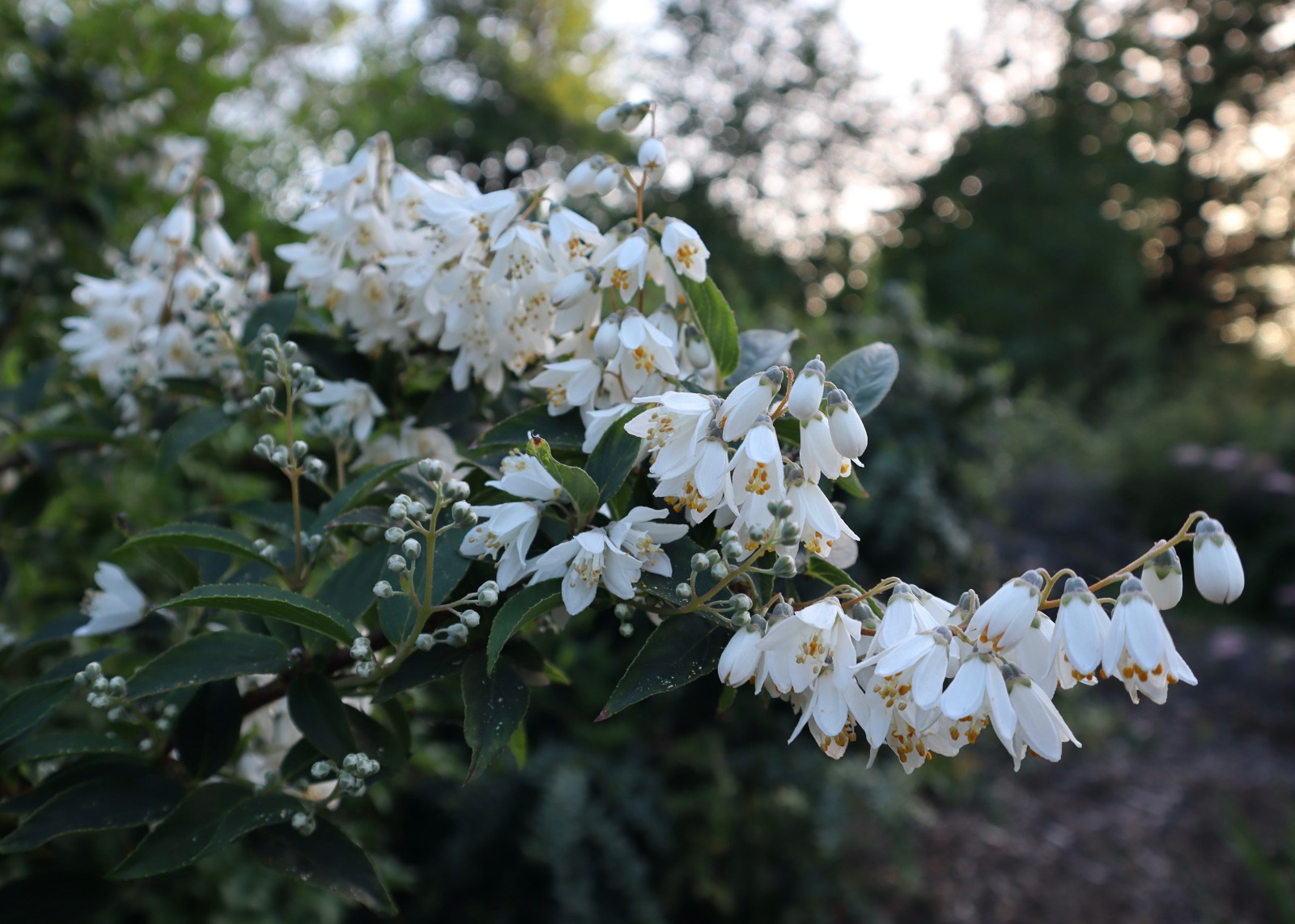Deutzia pulchra
Credits
Article from Bean's Trees and Shrubs Hardy in the British Isles
Recommended citation
'Deutzia pulchra' from the website Trees and Shrubs Online (treesandshrubsonline.
Genus
Other taxa in genus
- Deutzia amurensis
- Deutzia compacta
- Deutzia corymbosa
- Deutzia discolor
- Deutzia × elegantissima
- Deutzia glomeruliflora
- Deutzia gracilis
- Deutzia grandiflora
- Deutzia × hybrida
- Deutzia × lemoinei
- Deutzia longifolia
- Deutzia × magnifica
- Deutzia maximowicziana
- Deutzia mollis
- Deutzia monbeigii
- Deutzia purpurascens
- Deutzia reflexa
- Deutzia rehderana
- Deutzia × rosea
- Deutzia rubens
- Deutzia scabra
- Deutzia schneiderana
- Deutzia setchuenensis
- Deutzia sieboldiana
- Deutzia staminea
- Deutzia taiwanensis
- Deutzia vilmoriniae
- Deutzia wilsonii
A deciduous shrub 8 ft or more high; young shoots covered with minute scales. Leaves lanceolate to narrowly ovate, slender-pointed, wedge-shaped to nearly rounded at the base, remotely and minutely toothed, 11⁄2 to 4 in. long, 3⁄4 to 2 in. wide, furnished on the upper side with stellate hairs or scales having five to eight rays, much more thickly beneath with many-rayed ones; stalk 1⁄4 to 5⁄8 in. long. Flowers pendulous, produced in early May in slender panicles 2 to 4 in. long terminating short leafy twigs, often forming as a whole a compound panicle 12 in. long by 6 in. wide. Petals narrowly oblong or linear, pointed, nearly 1⁄2 in. long, 1⁄8 in. wide, rather erect but recurved towards the end, scaly, white tinged with pink. Calyx bell-shaped, very scaly, with five short, broadly triangular teeth; styles five; stamens with two spreading lobes or wings at the top. Bot. Mag., t. 8962.
Native of the Philippines (N. Luzon) and of Formosa, whence it was introduced in 1918 by Wilson (W. 10906). It first flowered with the late Marquess of Headfort at Headfort House, Co. Meath, in 1922. It has been confused with D. taiwanensis (q.v.) which is also a native of Formosa. It is a very beautiful species, well worthy of a choice position. ‘The long sprays of flowers are like Lily of the Valley, and I have counted as many as thirty-five blossoms in a single raceme. The closely clustered anthers are bright orange. The deep-green leaves are perfectly shaped and the whole shrub has an aristocratic bearing’ (H. G. Hillier in Ornamental Flowering Trees and Shrubs (Conf. Rep.), 1938). The peeling orange-buff stems are an additional attraction. At Kew it is only hardy when grown against a wall.
From the Supplement (Vol. V)
D. taiwanensis sens. Hayata, not (Maxim.) Schneid.; D. pulchra var. formosana Nakai






